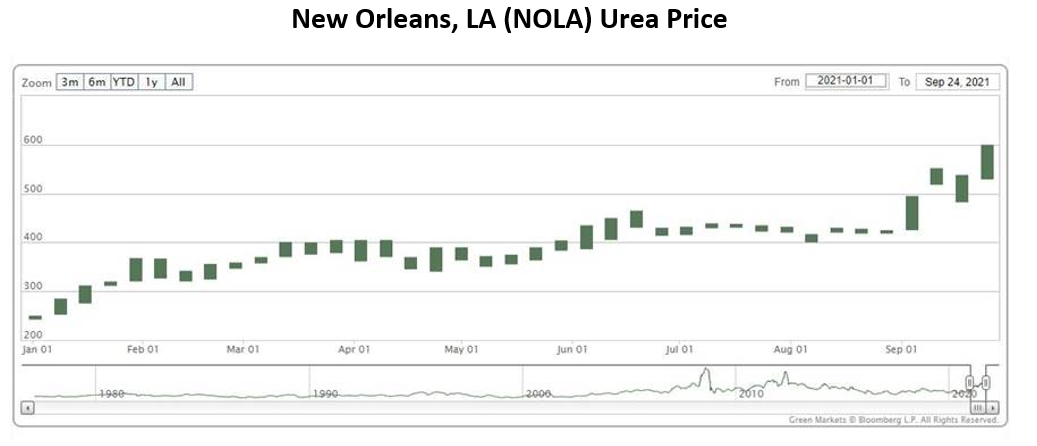
DEF Prices Explode – How to Manage Your DEF Supply
Although this newsletter typically focuses exclusively on fuel markets and the trends impacting them, today’s topic will cover an important adjacent field: Diesel Exhaust Fluid. DEF is quite simple, made up of just two ingredients, urea and distilled water. However, the product is a critical commodity: throughout North America, modern fleets cannot run without DEF. Now, due to production challenges worldwide, DEF is becoming an increasingly important subject of conversation.
DEF prices have been rocketing higher over the past month, on the heels of a steady upward trajectory throughout 2021. The steep increase is due to rising urea prices. Urea, created from ammonia, has important uses in fertilizer in addition to being the main ingredient in DEF. With a few exceptions, prices generally trend in the $200-$300 range per ton, but in June prices blew past $400/ton, and since then have continued climbing to a staggering $600/ton.
There are three reasons Urea prices (and therefore DEF prices) have risen so quickly:
- For most of the year, rising commodity prices have lifted all costs – crops, metals, energy, and chemicals such as urea. Just like oil prices have been rising all year, urea prices have gone up due to the post-pandemic recovery.
- More recently, in the US, Hurricane Ida damaged some of the major Gulf Coast manufacturing plants, creating delivery challenges throughout the country. Moreover, New Orleans serves as a major hub for urea trading, causing prices to rise.
- Looking ahead, markets are pricing in rising costs to import urea from overseas. Europe is a major producer of urea, and the recent energy crisis will significantly raise the cost to create the product. Fertilizer and DEF demand aren’t going away, so restricted European imports will significantly affect DEF rates in the coming months.
This confluence of factors – not to mention rising steel prices impacting totes, resin prices impacting jugs, and a driver shortage impacting freight – have caused a severely constrained DEF market. At least one major national DEF supplier was forced to declare force majeure. Operational challenges can result in widespread delivery issues, causing mayhem on supply chains.
One of the best solutions for managing the supply gap is to increase storage capacity when possible. Having extra supply on-site provides more lead-time for deliveries, ensuring your equipment remains operational. Depending on your existing storage capacity and delivery schedule, increasing storage may also help you decrease your total DEF cost, since a large portion of DEF costs are driven by logistics rather than commodity rates.
Interested in learning more about DEF solutions? Click below to learn more.
This article is part of Daily Market News & Insights
Tagged:
MARKET CONDITION REPORT - DISCLAIMER
The information contained herein is derived from sources believed to be reliable; however, this information is not guaranteed as to its accuracy or completeness. Furthermore, no responsibility is assumed for use of this material and no express or implied warranties or guarantees are made. This material and any view or comment expressed herein are provided for informational purposes only and should not be construed in any way as an inducement or recommendation to buy or sell products, commodity futures or options contracts.







